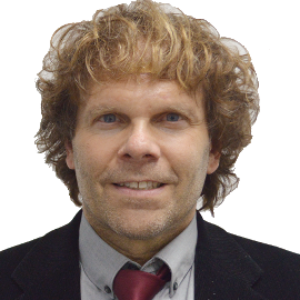Title : Design and synthesis of novel psilocin prodrugs with improved metabolic and pharmacokinetic properties as candidate therapies for treatment-resistant anxiety disorders
Abstract:
The psychedelic compound psilocybin has shown therapeutic benefit in the treatment of several psychiatric diseases. A recent randomized clinical trial conducted at Johns Hopkins Bayview Medical Center demonstrated the efficacy of psilocybin-assisted therapy in the treatment of Major Depressive Disorder (MDD). Similarly, recent phase IIb data from a large study evaluating psilocybin therapy for treatment-resistant depression presented statistically meaningful and long-term reduction in depressive symptoms. Despite these compelling clinical results, concerns regarding the duration of the psychedelic experience produced by psilocybin pose a significant barrier to its widespread therapeutic application. Psilocybin is the naturally occurring prodrug of the neuroactive compound psilocin. When orally administered, exposure to the acidic gastrointestinal environment together with enzymatic processing by intestinal and hepatic alkaline phosphatases lead to the dephosphorylation of psilocybin producing elevated levels of systemic psilocin. These plasma levels are measurably detectable up to 24 hours and produce a psychoactive episode lasting as long as 6 hours post-ingestion. In an effort to positively modify the kinetics of the acute psychedelic response, we have engineered a library of novel prodrug derivatives of psilocin, producing a diversity of established metabolically amenable moieties substituted at the 4-carbon position of the core indole ring. This library consists of thirty unique compounds represented by nine distinct prodrug classes. Each molecule was screened in vitro for metabolic stability using isolated human serum, and human cellular fractions derived from liver and intestinal tissues. This screen revealed fifteen molecules that produced measurable levels of psilocin in vitro, with certain prodrug classes significantly represented. These fifteen molecules were further evaluated for pharmacokinetic (PK) profiles in mice, assessing plasma exposures of both residual prodrug and resultant psilocin. PK results confirmed the efficiency of the prodrug classes which produced favourable in vitro metabolism. Upon both oral and intravenous administration, these molecules achieved acute levels of plasma psilocin concentration comparable to psilocybin-derived psilocin. Of note, all novel prodrugs tested maintained significantly reduced overall exposure, with no measurable levels detected at 24hrs post-dose. Finally, all novel prodrug molecules were screened for bioactive potential, by evaluating 5-HT2A receptor stimulation in vivo using the established behavioural marker of Head Twitch Response (HTR) in healthy mice. Strikingly, five prodrug derivatives produced peak HTRs that approached or exceeded levels induced by an equivalent dose of psilocybin. Of these active compounds, two novel psilocin prodrug molecules produced long-term anxiolytic benefit in chronically stressed mice evaluated in the marble burying psychiatric model. Overall, this screening campaign identified novel candidate prodrugs of psilocin with altered metabolic profiles and significantly reduced pharmacological exposure, potentially attenuating the duration of the psychedelic response. These molecules still maintained the long-term psychiatric and physiological benefits characteristic of psilocybin therapy. Additionally, these modified parameters also offer the opportunity for altered routes of administration bypassing conventional oral dosing.
What will audience learn from your presentation?
- Natural psychedelics such as psilocybin can be altered and improved through ProDrug strategies
- Pharmacokinetic (PK) parameters can be altered through rational drug design
- Altered PK parameters translates into in vivo behavioral changes in mice using established head-twitch response (HTR) model
- Screening campaigns can identify novel candidate prodrugs of psilocin with altered metabolic profiles and significantly reduced pharmacological exposure
- Screening campaigns potentially attenuate the duration of the psychedelic response




